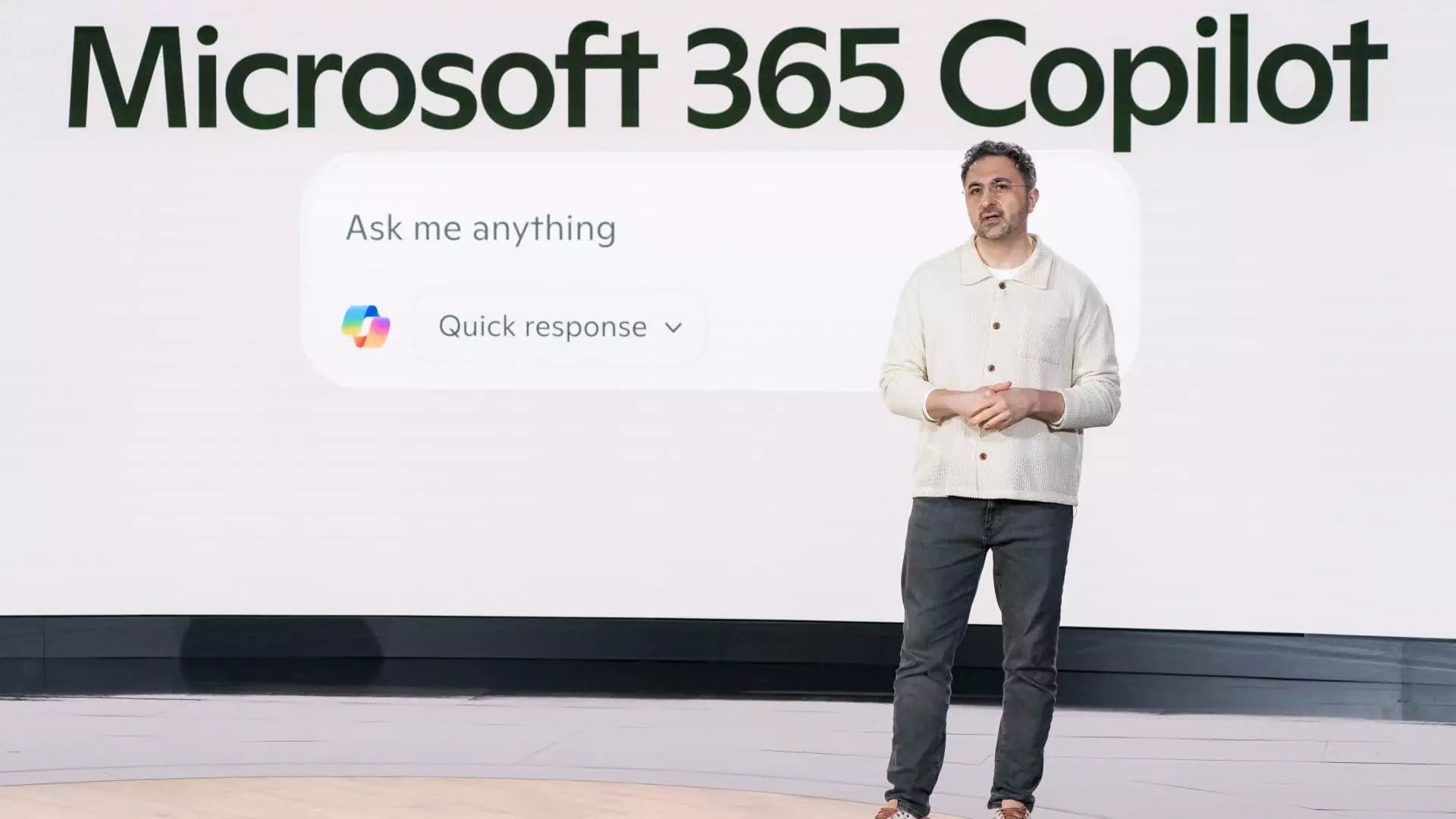In the high-stakes world of artificial intelligence, where innovation often feels like a race against time, Microsoft is adopting a remarkably cautious approach. The company’s reliance on Nvidia’s powerful graphics processing units (GPUs)—while simultaneously choosing not to lead in the development of cutting-edge AI models—raises eyebrows and questions about its long-term vision. Mustafa Suleyman, Microsoft’s CEO of AI, recently articulated a philosophy of strategic patience, arguing that being “three or six months behind” in AI model development could lead to more cost-effective and focused solutions. However, is this really a prudent strategy, or could it signal a fundamental misalignment with the fast-paced demands of the AI industry?
What Suleyman refers to as the “off-frontier” strategy is an interesting concept; leveraging the advancements made by others to refine and tailor solutions that meet specific needs. This approach ostensibly helps mitigate risk and allows for a more thoughtful development process. Yet, in an era characterized by rapid technological advancement and intense competition, there is a delicate balance to be struck between prudence and assertiveness. The fear of being left behind could transform this strategic advantage into a profound disadvantage if competitors like Google or emerging innovators surge ahead.
The Dynamics of Collaboration and Competition
Microsoft’s reliance on partnerships, particularly with OpenAI, highlights a double-edged sword. While this collaboration has yielded game-changing advancements in products like Bing and Windows, it also places Microsoft in a precarious position, particularly as fissures in this relationship begin to surface. With OpenAI exploring opportunities with rival cloud provider Oracle, Microsoft must weigh its dependence on partnerships against the imperative of developing its AI capabilities in-house.
This transitional period also raises the question of whether Microsoft can truly cultivate a distinct identity in AI amidst a crowded landscape. By securing a staggering $13.75 billion investment in OpenAI, Microsoft has tied its fortunes closely to a single collaborator, effectively limiting its options. If future developments lead OpenAI to prioritize other partnerships or projects, Microsoft risks losing its competitive edge, something that could ultimately diminish its standing in the tech landscape if left unchecked.
Technological Dependence vs. Independence
Suleyman’s comments on the necessity for Microsoft to develop “AI self-sufficiently” underscore a critical need for the company to cultivate its own capabilities. Nevertheless, Microsoft’s current trajectory raises serious concerns. The company reportedly has access to vast computational resources and a robust AI team, yet its hesitance to engage in the “absolute frontier” of AI development could be short-sighted. The distinction between being a thoughtful participant and a passive observer is razor-thin, and Microsoft must ask itself: Are they waiting for the dust to settle, or are they standing still while others rush past?
As tools like Copilot evolve—gaining features that echo OpenAI’s ChatGPT—Microsoft’s position as a follower might stifle innovation within its walls. The potential to create unique solutions tailored to Microsoft’s ecosystem exists, yet an emphasis on waiting may hinder spontaneous creativity and rapid advancement. Recent technological developments and emerging capabilities in AI are not merely trends; they are tectonic shifts that require companies to not just keep pace but to set the tempo.
Are They Ready for the Future? Or Just Maintaining the Status Quo?
The philosophical underpinning of Microsoft’s AI strategy—a preference for a slower, methodical approach rather than racing towards the bleeding edge—carries inherent risks. In a sector where change is the only constant, trepidation can lead to lost opportunities. Companies that seize the moment and innovate will likely attract talent, investment, and market share. Ultimately, Suleyman’s perspective might represent a sound business strategy grounded in financial prudence, but it also risks relegating Microsoft to an outdated model, where they are consistently left picking up the pieces after others have set the directions.
Ultimately, one wonders about the broader implications of Microsoft’s reserved approach. With the rapid evolution of generative AI and competitive markets, the aggressive pursuit of innovation is often the lifeblood that sustains relevance. Convincingly, Microsoft stands on a precarious edge, balancing the pursuit of careful advancements against the gnawing specter of obsolescence in a technology ecosystem that refuses to slow down. Are they masterfully plotting a course, or are they simply watching as others seize the moment? Only time will tell if their strategy of “tight second” will result in a reallignment of power in the tech landscape or just another case of lost opportunity.


Leave a Reply